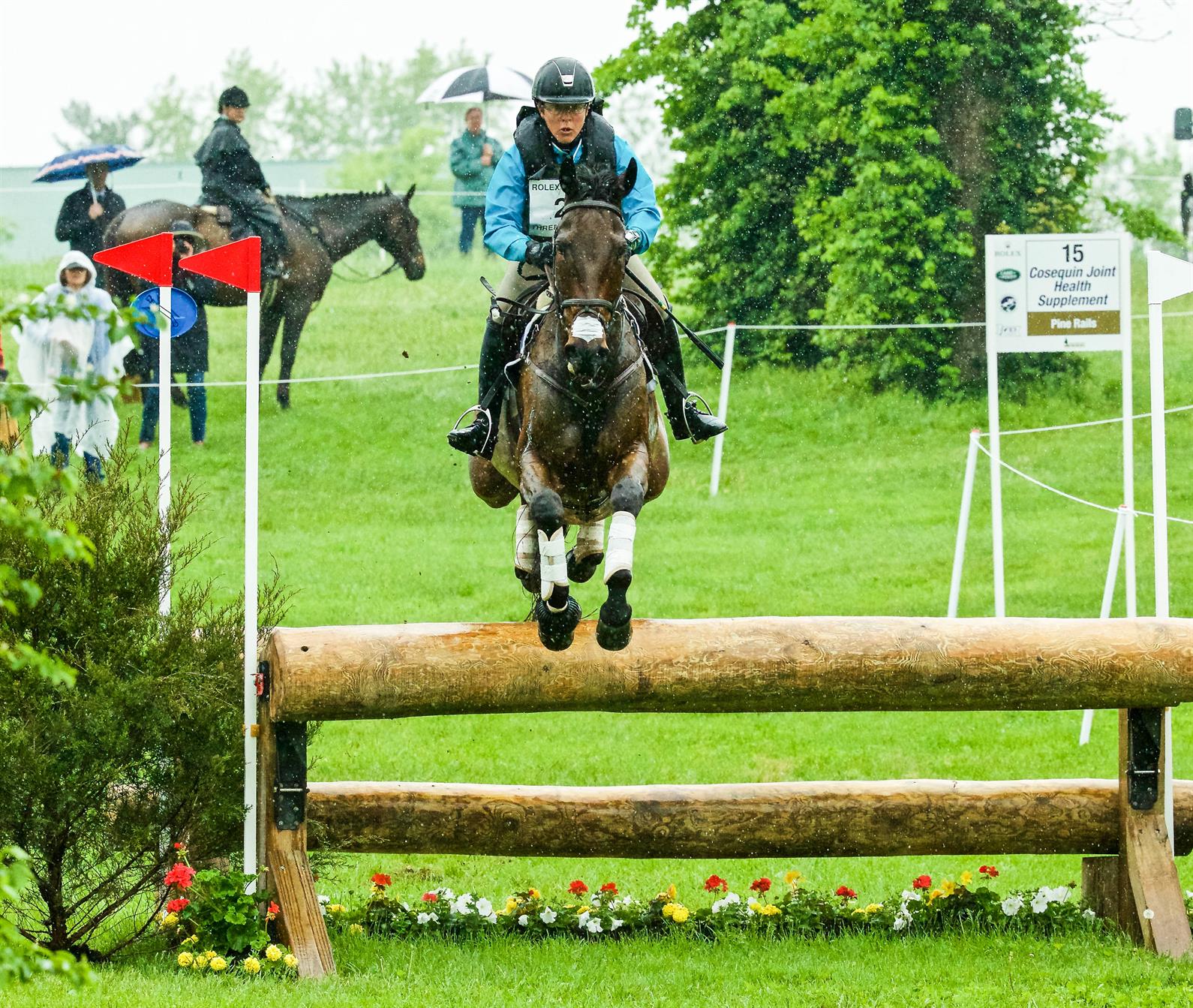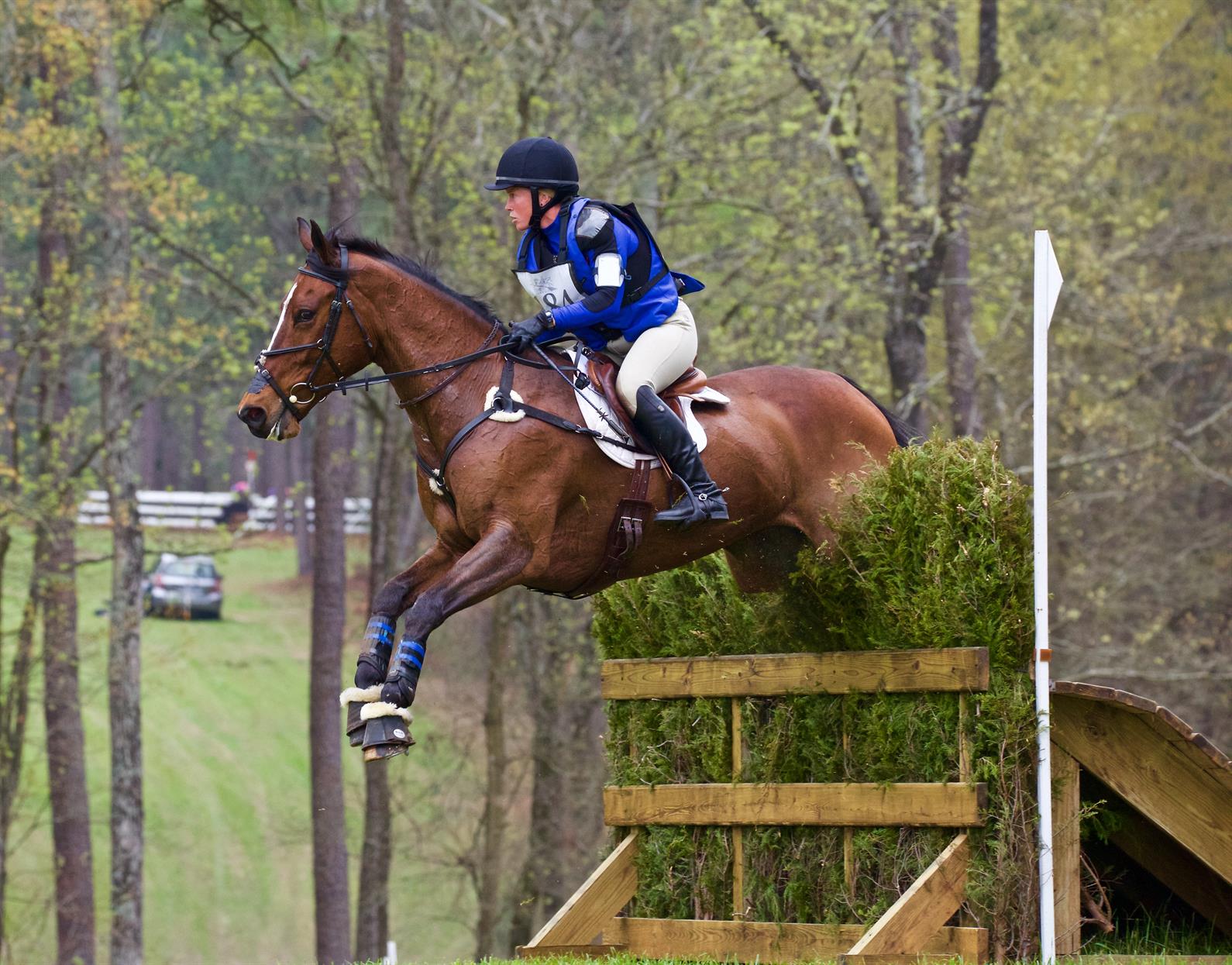Courtney Cooper got into breeding with every intention of producing upper-level event horses. Colleen Rutledge simply wanted to dabble in breeding with no particular expectations. They each took a chance on the process, and the U.S. eventing athletes believe they are on the right track with their four-star, homebred horses. Cooper and Who’s A Star and Rutledge and Covert Rights (CR) will each compete together in the Rolex Kentucky Three-Day Event presented by Land Rover for the second time. The two athletes shared background on the breeding process.
What got you started in breeding?

Cooper: I ran a one-star on Heavenly Star [Who’s A Star’s dam] as a six-year-old, but over that winter she tore her meniscus. We tried to rehabilitate her for several years, and nothing seemed to work. She was very well bred, so rather than turning her out in a field, I decided to breed her. Heavenly Star was from very well-known Irish Thoroughbred, I’m A Star, who produced multiple four-star level horses in Europe. I was looking to produce a horse myself to compete at the highest levels and searching for horses that were available.
Rutledge: Let’s Get it Right, CR’s mom, was the first horse I ran advanced on. I decided to breed her with BFF Incognito because I was impressed with his babies and thought I would get a good horse out of it, regardless. I figured I could take the worst of each horse and still have a good horse, and it was sheer luck that I got CR.
What qualities attracted you to the dam or sire?
Cooper: About 15 years ago, I found Aberjack, whom Mark Todd rode up the advanced level. Aberjack was by a stallion named Aberlou, who produced multiple four-star horses in Australia and New Zealand. Aberjack is almost a full Thoroughbred, and I’m A Star is a full Thoroughbred, so together I thought I would have a lot of Thoroughbred blood in a horse and the ability to have two great horses that could produce upper-level event horses.

Rutledge: I competed BFF Incognito through Preliminary. How well he learned impressed me. Originally, his owner thought he was too exuberant so he taught him to be quiet. I needed a little fire on cross-country day, so I learned that I had to teach CR how to be a racehorse with a forward-thinking engine.
Was potential evident?
Cooper: He didn’t start to look like a great sport horse until he was six-years-old. He was a big, leggy, youngster that needed to grow into his body. The goal was always to make it to Rolex with him and develop him into a horse better than his mom. A lot of things can happen between being born and making it to Rolex; luckily everything has fallen into place.
Rutledge: I thought there was something special about him from the moment he hit the ground, not just because he was my mare’s baby. I also looked at it from a horse’s eye, not on emotion. Because he was laid-back as a youngster, people thought I should have sold him as a show hunter. I always believed there was more in him, as every time I asked him to do something he came through. He always shows up for work with a smile on his face and has a positive attitude.
Is there an advantage to breeding your own horse?
Cooper: You have known the horse its entire career—the good, the bad, the level of understanding, the potential shortfalls in training, the personality. As a breeder, there comes a point where you have to transition your thinking that this is a trained athlete and you have to treat him as such.
Rutledge: The biggest difference is the solid relationship between us. I have to step back every so often and look at him with a different point of view.
Want articles like this delivered to your inbox every week? Sign up to receive the Equestrian Weekly newsletter here.
This article is original content produced by US Equestrian and may only be shared via social media. It is not to be re-purposed or used on any other website than USequestrian.org.


